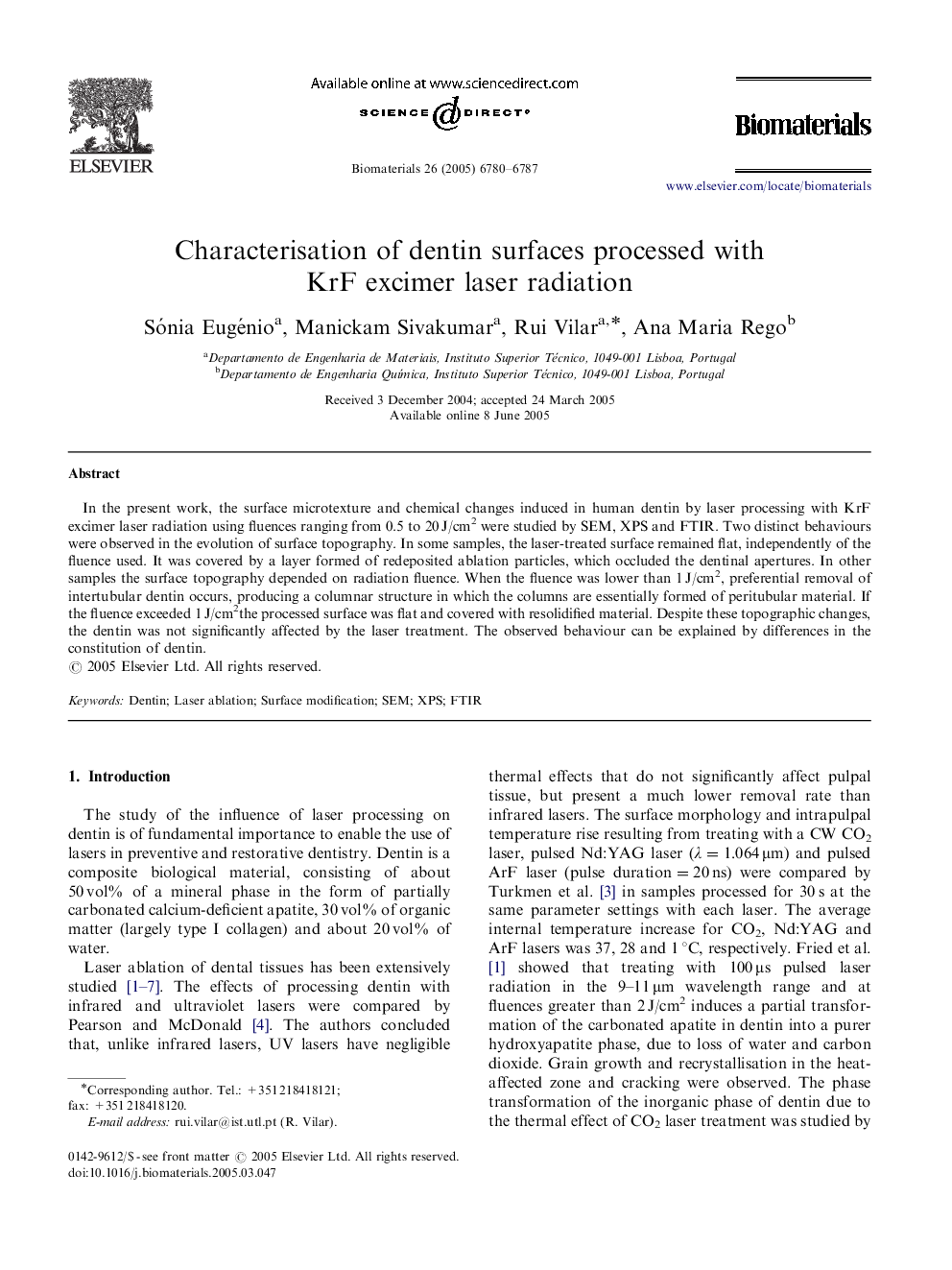| Article ID | Journal | Published Year | Pages | File Type |
|---|---|---|---|---|
| 11000 | Biomaterials | 2005 | 8 Pages |
In the present work, the surface microtexture and chemical changes induced in human dentin by laser processing with KrF excimer laser radiation using fluences ranging from 0.5 to 20 J/cm2 were studied by SEM, XPS and FTIR. Two distinct behaviours were observed in the evolution of surface topography. In some samples, the laser-treated surface remained flat, independently of the fluence used. It was covered by a layer formed of redeposited ablation particles, which occluded the dentinal apertures. In other samples the surface topography depended on radiation fluence. When the fluence was lower than 1 J/cm2, preferential removal of intertubular dentin occurs, producing a columnar structure in which the columns are essentially formed of peritubular material. If the fluence exceeded 1 J/cm2the processed surface was flat and covered with resolidified material. Despite these topographic changes, the dentin was not significantly affected by the laser treatment. The observed behaviour can be explained by differences in the constitution of dentin.
